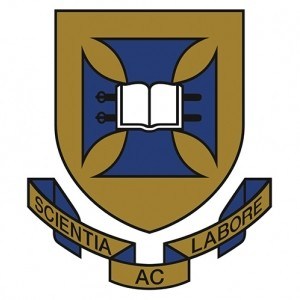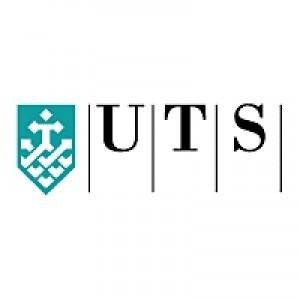Photos of university / #uniofqld
The Master of Magnetic Resonance Technology at The University of Queensland is a specialized postgraduate program designed to equip students with advanced knowledge and practical skills in the field of magnetic resonance, including MRI (Magnetic Resonance Imaging), NMR (Nuclear Magnetic Resonance), and related imaging and spectroscopy techniques. This comprehensive course combines theoretical foundations with hands-on training, preparing graduates to contribute effectively to medical research, diagnostic imaging, and scientific investigation. The curriculum covers core topics such as the principles of magnetic resonance, image acquisition and processing, advanced imaging techniques, neuroimaging, spectroscopy, and data analysis. Students also gain experience through laboratory sessions, practical placements, and research projects, fostering proficiency in operating state-of-the-art MRI equipment and analyzing complex datasets. The program is designed for professionals seeking to deepen their expertise in magnetic resonance technology or for those aspiring to careers in medical research, healthcare, or scientific industries. With a focus on innovation and evidence-based practice, the course emphasizes current developments and future trends in the field. Graduates of the Master of Magnetic Resonance Technology will be well-prepared for roles involving clinical imaging, research leadership, technical consultancy, and device development. The program also encourages interdisciplinary collaboration, integrating knowledge from physics, engineering, medicine, and biomedical sciences. By completing this program, students will join a community of professionals dedicated to advancing the capabilities and applications of magnetic resonance technologies, ultimately contributing to improved patient care and scientific discovery.
The Master of Magnetic Resonance Technology at The University of Queensland is a comprehensive graduate program designed to provide students with advanced knowledge and practical skills in the field of magnetic resonance imaging and spectroscopy. This program aims to equip graduates with the expertise necessary to operate, optimize, and develop magnetic resonance systems used in biomedical research, clinical diagnostics, and industrial applications. Throughout the course, students explore the fundamental principles of nuclear magnetic resonance (NMR) and magnetic resonance imaging (MRI), including the physics behind magnetic fields, radiofrequency pulses, and signal detection. The curriculum emphasizes both theoretical understanding and hands-on experience, allowing students to engage with state-of-the-art MRI equipment, learn image processing techniques, and understand the intricacies of data interpretation.
Students will study subjects such as advanced MRI techniques, pulse sequence design, image reconstruction algorithms, and the application of magnetic resonance in various scientific and medical contexts. In addition to technical skills, the program also covers aspects of research methodology, project management, and ethical considerations relevant to the field. Practical components are integrated into the program to ensure that students gain real-world experience, often in collaboration with leading research institutions and healthcare facilities. The coursework is complemented by research projects, providing opportunities for innovation and scientific contribution.
Graduates of this program are prepared for diverse career paths, including clinical MRI technologists, research scientists, biomedical engineers, and developers of new magnetic resonance technologies. The program’s multidisciplinary approach fosters critical thinking, problem-solving, and technical proficiency, positioning graduates as leaders in the rapidly evolving field of magnetic resonance technology. By completing this Masters degree, students will be well-equipped to contribute to advancements in medical imaging, improve diagnostic techniques, and support scientific research that enhances health outcomes worldwide.
Entry Requirements for the Master of Magnetic Resonance Technology (MMagResonTech) at The University of Queensland typically include a completed undergraduate degree in a relevant discipline such as science, engineering, or a health science field. Applicants are generally expected to demonstrate a strong academic record, with a minimum GPA as specified by the university. Prior knowledge or experience in magnetic resonance imaging, medical imaging, biomedical engineering, or related fields may be advantageous but is not always mandatory. English language proficiency is required for international students, usually demonstrated through a standardized test such as IELTS, with a minimum overall score of 6.5, and no band less than 6.0. The program enrols students with a diverse academic background, emphasizing interdisciplinary skills necessary for advanced technical work in magnetic resonance. Applicants may need to submit academic transcripts, a curriculum vitae, a statement of purpose outlining their interest in magnetic resonance technology and career goals, and letters of recommendation. Certain prerequisites such as foundational knowledge in physics, anatomy, or imaging technology might be recommended or required, depending on the applicant’s previous education. The selection process considers both academic performance and relevant experience, with an aim to admit students capable of contributing to and benefiting from the specialized coursework and research components of the program. The program's structure includes coursework units, such as advanced magnetic resonance principles, medical imaging techniques, and biomedical signal processing, combined with research projects that culminate in a thesis submission. International applicants must ensure they meet visa requirements and submit all necessary documentation by specified deadlines. Given the rapidly evolving nature of magnetic resonance technology, the university often updates program details, so applicants are advised to consult the official university website or contact the admissions office for the most current requirements and guidelines. Overall, successful applicants should demonstrate a solid foundation in science or engineering disciplines, a keen interest in medical imaging technologies, and a commitment to advancing their expertise in magnetic resonance to contribute meaningfully to health care and biomedical research.
The Master of Magnetic Resonance Technology (MMagResonTech) program at The University of Queensland offers a comprehensive curriculum designed to prepare graduates for advanced roles in the field of magnetic resonance in medical imaging and research. Regarding the financing studies, students are encouraged to explore a variety of funding options to support their education. The university provides several scholarships and financial aid programs, including merit-based scholarships, research scholarships, and bursaries specifically targeted at postgraduate students. These scholarships are competitive and often require an application process that considers academic performance, research potential, and financial need. Additionally, students may be eligible for government funding schemes such as Australia's Commonwealth Supported Place (CSP), which offers subsidized tuition fees for eligible domestic students. International students, on the other hand, are generally required to pay full tuition fees, which vary depending on the program and are specified on the university’s fee schedule. Students often supplement their funding by applying for external scholarships from government agencies, industry partners, or private foundations that support students in science and technology disciplines. Part-time work opportunities within the university, including research assistantships and internships, can also provide financial support while gaining practical experience. The university’s financial services offer guidance on budgeting, loan options, and financial planning tailored for postgraduate students. It is recommended that prospective students contact the university’s scholarships office or financial aid services early in the application process to identify suitable funding options and understand application deadlines. Overall, financing studies in the MMagResonTech program requires careful planning, leveraging available scholarships, government subsidies, potential employer sponsorships, and personal savings to successfully complete the degree without undue financial hardship.
The Master of Magnetic Resonance Technology (MMagResonTech) at The University of Queensland is a postgraduate program designed to equip students with advanced knowledge and practical skills in the field of magnetic resonance imaging (MRI) and spectroscopy. This program is tailored for individuals aiming to improve imaging techniques, develop new MRI protocols, and contribute to research and development within medical, scientific, and industrial sectors. It covers a comprehensive curriculum that includes core subjects such as magnetic resonance physics, imaging principles, and signal processing, alongside specialized topics like clinical applications, research methodologies, and innovative technology development. Students gain hands-on experience through laboratories and practical sessions that utilize state-of-the-art MRI equipment, providing them with valuable skills in operating and maintaining advanced imaging systems. The program emphasizes both theoretical understanding and practical application, preparing graduates to work in hospitals, research institutions, and industry sectors focused on imaging and diagnostic technologies. A key feature of the program is its integration of multidisciplinary knowledge, combining physics, engineering, biomedical sciences, and computer science to foster a holistic understanding of magnetic resonance technology. Graduates of the program are equipped to pursue careers in clinical imaging, medical research, technology development, or further doctoral studies. The program is typically delivered through a combination of lectures, tutorials, research projects, and internships, with a strong emphasis on research engagement and innovation. Admission requirements generally include a relevant undergraduate degree, such as in physics, engineering, biomedical sciences, or related disciplines, and applicants must demonstrate a strong interest or background in imaging technologies. The program duration is usually two years for full-time students, with options for part-time study. The University of Queensland supports students with modern facilities, research opportunities, and links with industry partners to ensure that graduates are well-prepared for the evolving demands of the field of magnetic resonance technology.








